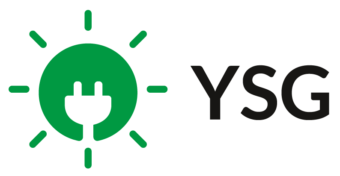The annual update process for the VDER Environmental Value (E-Value) has seen an increase in E-Value from $27.41/MWh to $31.03/MWh. This is a result of the New York Department of Public Service (NY DPS) having recalculated the Social Cost of Carbon (SCC) —as outlined in this document. Please note that this new E-Value of $31.03/MWh will only be available to those projects making their 25% interconnection deposit on or after April 21, 2021.
Additionally, it’s important to note that this increased E-Value does not reflect adoption of New York State Department of Environmental Conservation (NY DEC) guidance on the Social Cost of Carbon (SCC). Adoption of this guidance, which the New York Solar Energy Industries Association (NYSEIA) and other Clean Energy Parties members are advocating for with retroactive applicability, would lead to an even more significant increase in E-Value.
What is VDER Environmental Value?
Environmental Value (E-Value) is one of the factors which determines the value of excess energy under the Value Stack methodology. The Value Stack methodology falls under the umbrella of the Value of Distributed Energy Resources (VDER) Program—a program designed under New York’s comprehensive energy strategy, Reforming the Energy Vision (REV).
Environmental Value is just one of many factors determining the value of excess energy under the Value Stack method. Below you’ll find a list of the different values taken into consideration as part of the Value Stack methodology, as well as a brief description of each.
- Energy Value (LBMP): This is the wholesale energy price (per kWh) as determined by NYISO. It changes on an hourly basis and differs according to geographic zone.
- Capacity Value (ICAP): This is a valuation of how effectively a project reduces NYS energy usage during the most energy-intensive days of the year.
- Environmental Value (E): This is a valuation of how much environmental benefit a clean kilowatt hour (kWh) generates for the grid.
- Demand Reduction Value (DRV): This value is determined by the extent to which a project reduces the future need to make updates to the grid.
- Locational System Relief Value (LSRV): This is available in locations designated by the utility where Distributed Energy Resources (DERs) can provide additional benefits to the grid. Each of these designated locations only has limited MW/LSRV capacity available.
A number of different technologies are eligible for the Value Stack, including:
- Solar Photovoltaics (PV)
- Stand-alone/Co-located Energy Storage
- Certain Types of Combined Heat and Power (CHP)
- Anaerobic Digesters
- Wind Turbines
- Small Hydro
- Fuel Cells
Learn More About VDER
To learn more about the Value of Distributed Energy Resources (VDER) and the Value Stack methodology, consult some of our popular articles on the topic below.
- The New York VDER Value Stack: How It Works
- New York VDER: Overview of the Value Stack
- New York VDER Program & NYSERDA NY-SUN Program
If you’re interested in New York solar—residential, commercial, or community—reach out to YSG Solar today, just send us an email or call at 212.389.9215 to learn more. For landowners, a solar land lease could be your best bet. YSG is currently seeking suitable land in the following NY counties:
- Albany
- Cattaraugus
- Chautauqua
- Chenango
- Clinton
- Columbia
- Delaware
- Dutchess
- Erie
- Essex
- Franklin
- Fulton
- Genesee
- Greene
- Hamilton
- Herkimer
- Jefferson
- Lewis
- Livingston
- Madison
- Montgomery
- Niagara
- Oneida
- Orange
- Orleans
- Otsego
- Putnam
- Rensselaer
- Saratoga
- Schenectady
- Schoharie
- St. Lawrence
- Sullivan
- Ulster
- Warren
- Washington
- Westchester
- Wyoming
YSG Solar is a project development company responsible for commoditizing energy infrastructure projects. We work with long-term owners and operators to provide clean energy assets with stable, predictable cash flows. YSG's market focus is distributed generation and utility-scale projects located within North America.
Sources:
Featured Photo by Matteo Catanese on Unsplash.

